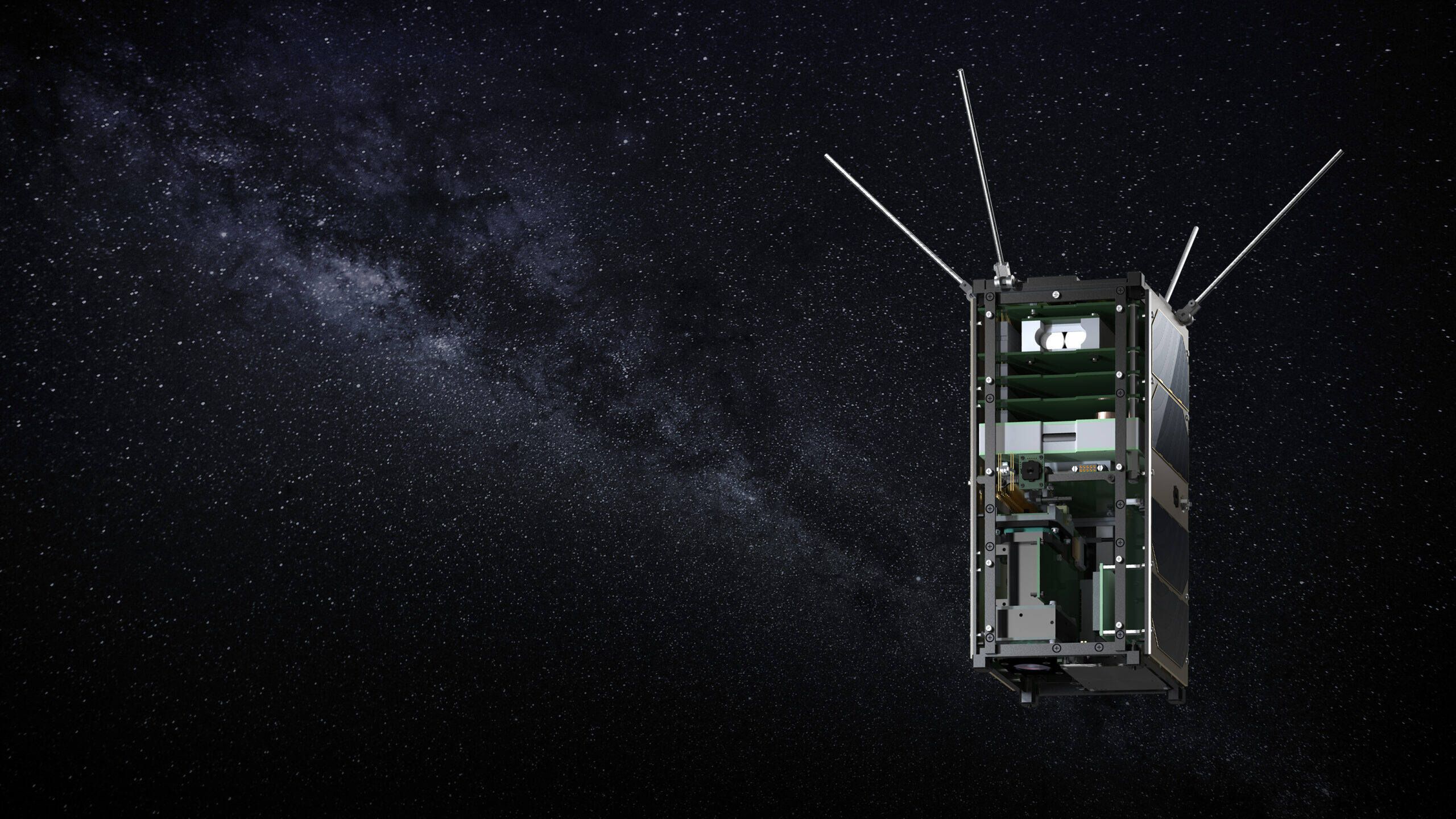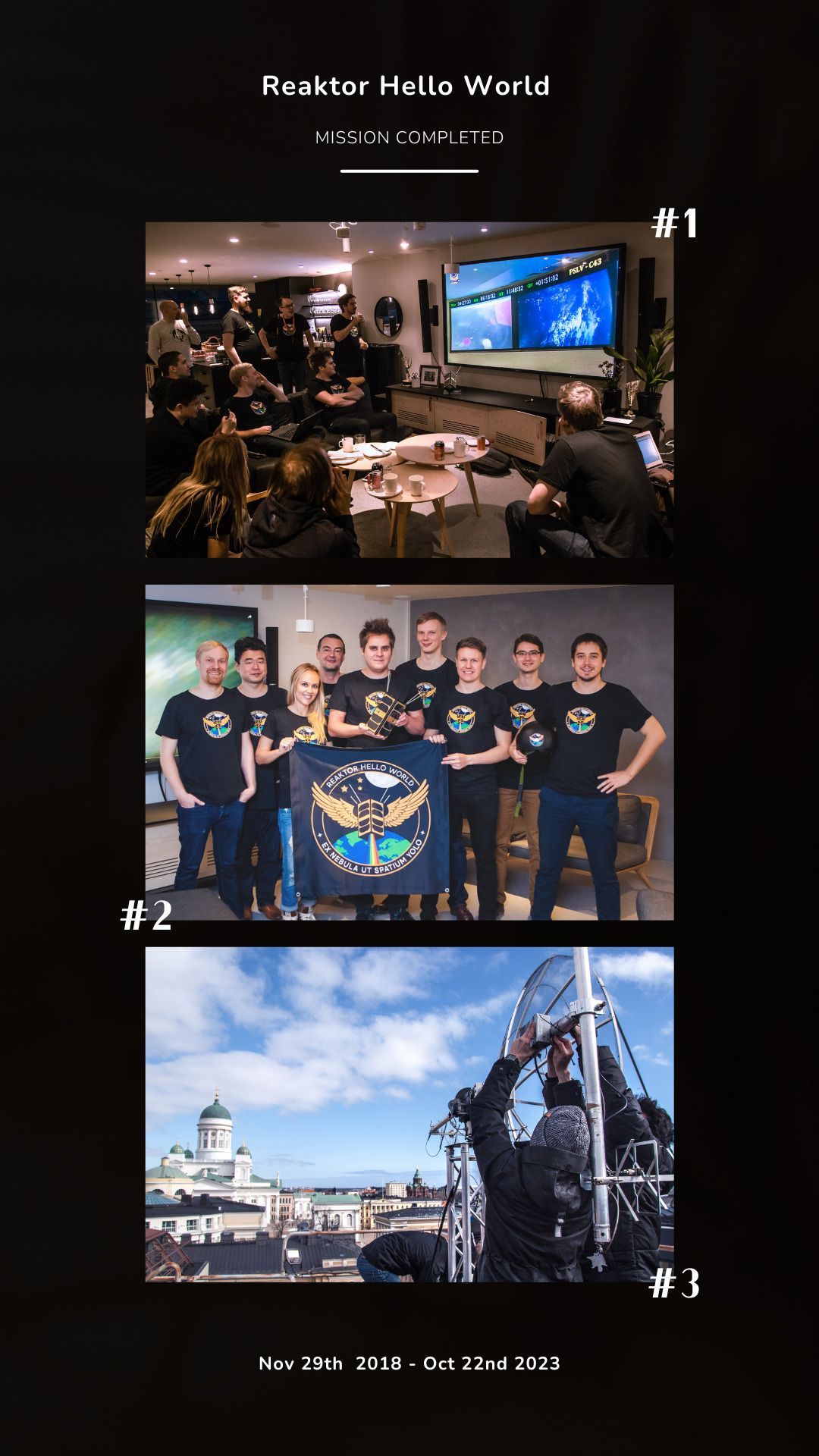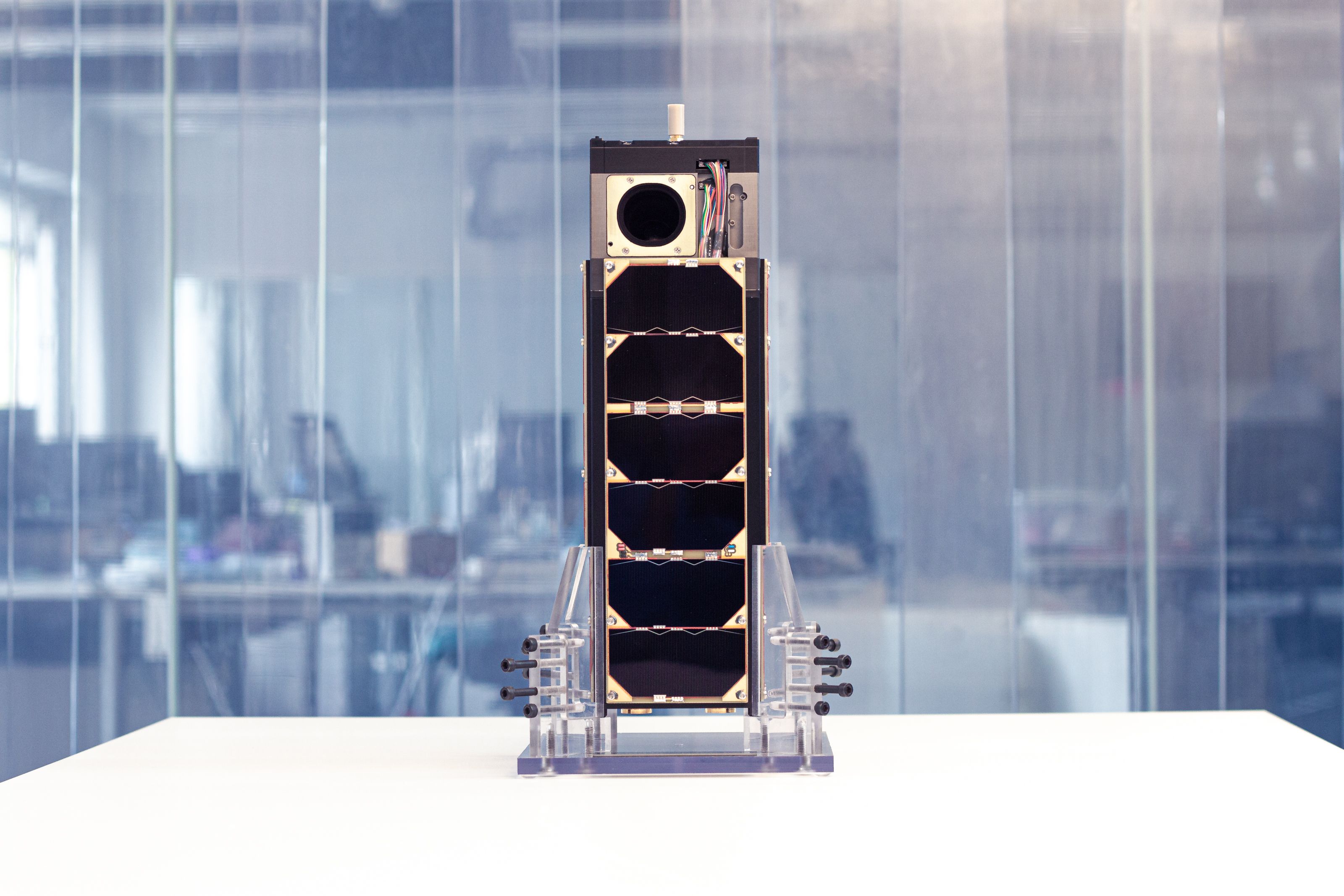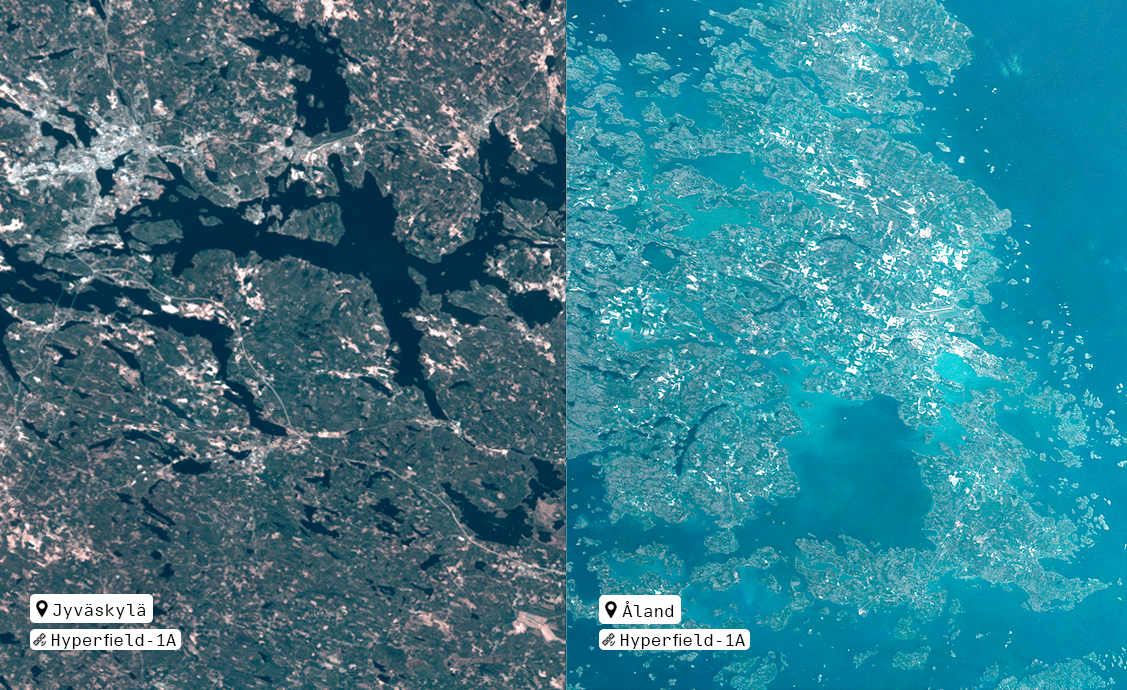BLOG • October 25, 2023
Reaktor Hello World bids adieu


The first Finnish satellite, Reaktor Hello World, re-entered the Earth's atmosphere, marking a historical milestone for Finland and Kuva Space.
Key facts
Mission start: 2018-11-30
Mission end: 2023-10-22
Mission duration: 4 years, 10 months and 21 days
Total distance covered: 1 billion 250 million 972 thousand 50 kilometers 938 meters
Total number of orbits: 29 171
In bidding farewell to the pioneering nanosatellite, Reaktor Hello World, we reflect on the remarkable journey that spanned close to five years, taking us from the launch on November 29th, 2018, to its recent descend and burning in the atmosphere on Oct 22nd 2023 . This mission was a joint effort with the Finnish technology consulting company Reaktor. The mission was more than just a space adventure: it marked a pivotal moment in the evolution of hyperspectral technology. Reaktor Hello World carried the World’s smallest infrared hyperspectral imager, developed by the Finnish Research Institute VTT, into space.
The primary objective of Reaktor Hello World was to demonstrate the feasibility of an infrared hyperspectral imager on a nanosatellite weighing just 2.4 kg and to demonstrate Kuva Space’s proprietary satellite technology.
The success of this mission opened our minds to the potential of spaceborne hyperspectral technology. It inspired us to embark on our current mission to create the World’s most extensive hyperspectral constellation, delivering new and enhanced insights to detect, identify, and forecast a wide range of natural and manmade changes on Earth.
Hyperspectral imaging technology is a powerful tool for understanding and combating the climate change impact. The technology allows us to capture a broad spectrum of colors from space, providing insights into the composition, health, and properties of objects on Earth.
With the first images taken by Reaktor Hello World from the Sahara desert, we validated that the satellite can detect soil moisture and mineral composition – something that has never been done with a nanosatellite before!
With over 1,2 billion kilometers on the meter, Reaktor Hello World has confirmed and strengthened our space technology know-how with its fair share of challenges. Reaktor Hello World lacked crucial features like a reliable orientation system and a higher spatial resolution camera and struggled with data transmission speed. These limitations, though frustrating at the time, were necessary compromises to keep the project on track, both in terms of schedule and budget. The good news is that we’ve come a long way since then. Subsequent Kuva Space satellites have been equipped with improved technology, fixing those initial issues.
The success of this mission has been a turning point for our company, setting the foundation for our technological capabilities and ways of working. We thank our partners, Reaktor and VTT Technical Research Centre of Finland, for the partnership to deliver a pioneering satellite in under two years. The satellite served us well until the end of its almost five-year orbital lifetime.
Reaktor Hello World may have said its goodbyes, but its legacy will live on as we work on our current hyperspectral constellation mission to deliver a diverse range of global applications, from biomass mapping and yield forecasting to environmental monitoring for the benefit of humanity.
We’ll be raising a glass and sharing a few cheers in honor of the satellite that taught us so much along the way.
Cheers to Reaktor Hello World! 🚀🥂

Resources

Case studies · November 5, 2025
Exposing dark vessels in contested seas with hyperspectral intelligence

Press releases · October 1, 2025
